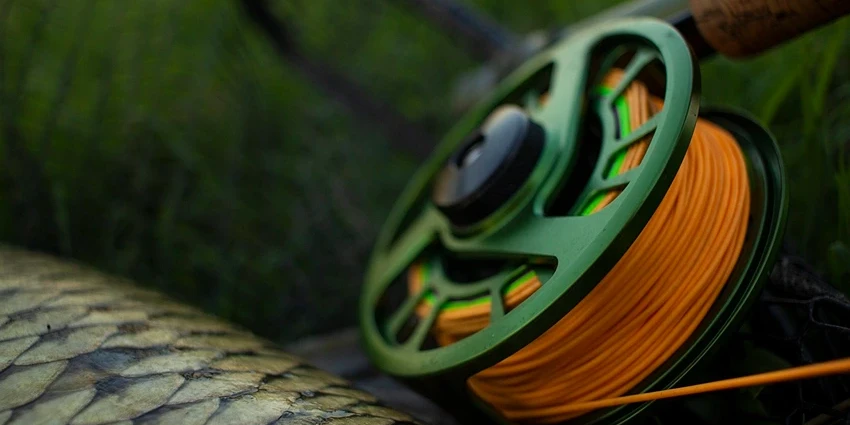All products were chosen independently by our editorial team. This review contains affiliate links and we may receive a commission for purchases made. Please read our affiliates FAQ page to find out more.
When it comes to bass fishing, understanding the nuances of weather patterns can make all the difference in your success on the water. Whether you’re a seasoned angler or just starting your journey in the world of bass fishing, knowing how various weather conditions affect bass behavior is crucial. In this article, we’ll delve into the fascinating world of bass fishing weather patterns and techniques. So, grab your gear, put on your fishing hat, and let’s dive in!

Jump to:
The Role of Temperature in Bass Fishing
Understanding Temperature’s Impact
The first and foremost aspect of weather patterns to consider in bass fishing is temperature. Temperature directly influences the metabolic rate of bass and, subsequently, their feeding behavior.
Bass are cold-blooded creatures, which means their body temperature depends on their environment. Here’s how temperature affects bass fishing:
- Warm Water (70-80°F):
- Bass are active and more likely to feed.
- They often move to shallower waters to hunt.
- Use fast-moving lures and topwater baits.
- Cool Water (50-70°F):
- Bass are less active but still feeding.
- Slow presentations with jigs or soft plastics work well.
- Cold Water (Below 50°F):
- Bass become lethargic and feed less.
- Slow-moving baits like jigs or live bait may be effective.
Seasonal Variations
Seasonal changes play a significant role in water temperature. During spring and fall, temperatures are moderate, leading to more active bass. Summer and winter bring extreme temperatures, which require different approaches.
Table 1: Seasonal Temperature and Bass Behavior
| Season | Water Temperature Range (°F) | Bass Behavior |
| Spring | 50-70 | Active, feeding frenzy |
| Summer | 70-80+ | Active but selective |
| Fall | 60-70 | Active, preparing for winter |
| Winter | Below 50 | Lethargic, less feeding |
As you plan your fishing trips, keep an eye on the water temperature to adjust your techniques accordingly. Now, let’s move on to another crucial factor: wind patterns.
Wind Patterns and Their Impact
Sailing Through Windy Waters
Wind direction and speed have a profound influence on bass fishing. Understanding how to adapt to different wind conditions can greatly improve your chances of landing a trophy catch.
- Wind Direction:
- Headwind: Bass tend to face into the wind, so cast upwind for better lure presentation.
- Tailwind: Fish downwind to avoid spooking bass.
- Crosswind: Use the wind to your advantage for longer casts.
- Wind Speed:
- Calm Days: Bass may be cautious; use finesse techniques.
- Moderate Breeze: Bass are active and feeding.
- Strong Winds: Bass move to sheltered areas; focus your efforts there.
Wind and Lure Selection
Choosing the right lure in windy conditions is essential. Here’s a quick guide:
- Calm Days: Use finesse lures like soft plastics or drop shots.
- Moderate Breeze: Crankbaits and spinnerbaits work well in choppy waters.
- Strong Winds: Stick to heavy lures like jigs to maintain control.
Table 2: Wind Conditions and Lure Selection
| Wind Speed | Recommended Lures |
| Calm (0-5 mph) | Finesse baits (soft plastics) |
| Moderate (5-15 mph) | Crankbaits, spinnerbaits |
| Strong (15+ mph) | Heavy jigs, Carolina rigs |
Table 1: Seasonal Temperature and Bass Behavior
| Season | Water Temperature Range (°F) | Bass Behavior |
| Spring | 50-70 | Active, feeding frenzy |
| Summer | 70-80+ | Active but selective |
| Fall | 60-70 | Active, preparing for winter |
| Winter | Below 50 | Lethargic, less feeding |
Table 2: Wind Conditions and Lure Selection
| Wind Speed | Recommended Lures |
| Calm (0-5 mph) | Finesse baits (soft plastics) |
| Moderate (5-15 mph) | Crankbaits, spinnerbaits |
| Strong (15+ mph) | Heavy jigs, Carolina rigs |
Register for our latest in-depth reviews and product round-ups from the experts
Enter your email address below to receive our twice monthly reviews emails.
By entering your details, you are agreeing to our terms and conditions and privacy policy. You can unsubscribe at any time.
Cloud Cover and Light Conditions
Beneath the Clouds
Cloud cover can significantly affect bass fishing. When skies are overcast, bass often become more active, as they feel safer under the cover of the clouds. Here’s how to make the most of these conditions:
- Partly Cloudy: Bass may be more cautious but still active.
- Overcast: Ideal conditions for topwater lures and shallow fishing.
- Heavy Clouds: Use bright-colored lures to increase visibility.
Fishing in Low Light
Low-light conditions, such as early morning and late evening, can be prime times for bass fishing, especially for those just starting out. For more comprehensive tips, check out our beginner’s guide to fishing. Bass have a distinct advantage during these periods:
- Dawn and Dusk: Bass come closer to the surface to feed.
- Night Fishing: Use noisy lures to create vibrations in the dark.
Table 3: Cloud Cover and Bass Fishing
| Cloud Cover | Bass Activity | Recommended Lures |
| Partly Cloudy | Cautious but active | Versatile lures |
| Overcast | Active, especially shallow | Topwater baits |
| Heavy Clouds | Active, visibility key | Bright-colored lures |

Precipitation and Water Clarity
Fishing in the Rain
While many anglers avoid fishing in the rain, it can lead to some excellent bass fishing opportunities. Here’s what you need to know:
- Light Rain: Bass often become more active, chasing baitfish.
- Steady Rain: Use noisy lures to attract bass in murky water.
- Post-Rain: Fishing can be excellent as bass resume feeding.
Water Clarity and Bass Behavior
The clarity of the water you’re fishing in plays a vital role. Clear water allows bass to see lures from a distance, while murky water requires closer presentation.
Table 4: Precipitation and Bass Fishing
| Precipitation | Bass Activity | Recommended Lures |
| Light Rain | Increased activity | Baitfish imitations |
| Steady Rain | Attract bass in murky water | Noisy lures |
| Post-Rain | Resumed feeding | Versatile lures |
Barometric Pressure and Its Significance
Understanding Barometric Pressure
Barometric pressure, or atmospheric pressure, has a notable impact on bass fishing. Fish are sensitive to pressure changes, and understanding this can lead to successful outings:
- High Pressure: Fish may move deeper; use slow presentations.
- Low Pressure: Bass are more active near the surface; fast lures work well.
- Pressure Changes: Pay attention to trends in barometric pressure.
Now, let’s move on to advanced bass fishing techniques to enhance your skills on the water.
Advanced Bass Fishing Techniques
Seasonal Strategies
To maximize your bass fishing success, it’s essential to adapt your techniques to the current season:
- Spring: Target shallow waters and spawning areas.
- Summer: Fish deeper, especially in hot weather.
- Fall: Follow migrating baitfish and bass.
- Winter: Slow and deep presentations are key.
Reading Weather Forecasts
Knowing how to interpret weather forecasts is a valuable skill. Modern weather apps can provide detailed information on wind, temperature, and precipitation, helping you plan your fishing trips.
Table 5: Barometric Pressure and Bass Fishing
| Pressure Type | Bass Activity | Recommended Techniques |
| High | May move deeper | Slow presentations |
| Low | Active near the surface | Fast lures |
| Changes | Pay attention to trends | Adapt techniques |
As promised, let’s now address some frequently asked questions about bass fishing weather patterns.
Frequently Asked Questions
There’s no one-size-fits-all answer, as bass behavior varies with different weather conditions. However, overcast skies and moderate wind are often favorable.
Yes, you can! Light rain can actually increase bass activity, and post-rain conditions are excellent for fishing.
High winds can make fishing challenging, but understanding wind direction and adapting your techniques can lead to success.
Bass tend to become less active during cold fronts, so consider using slower presentations and adjusting your tactics.
The ideal water temperature varies by season, but generally, bass are most active in the 70-80°F range.
Weather apps provide valuable information on wind, temperature, and precipitation. Use this data to plan your fishing trips accordingly.







